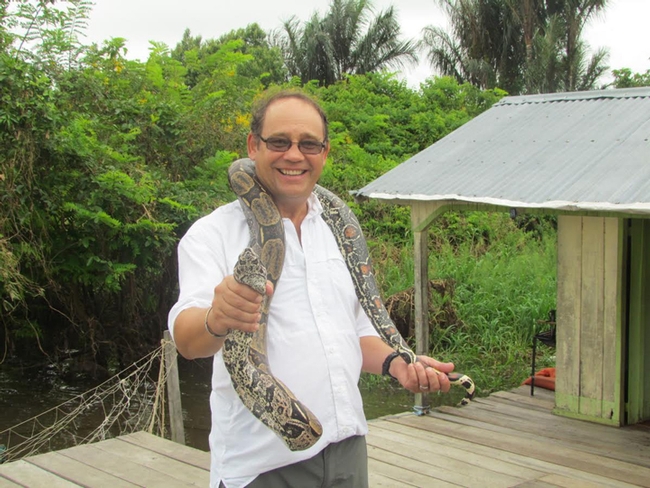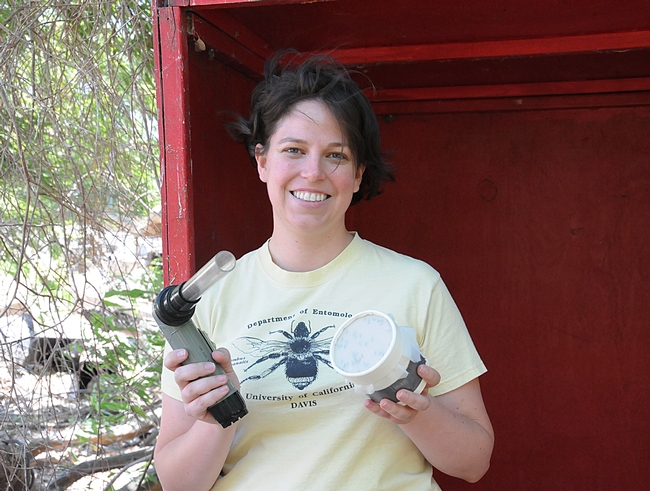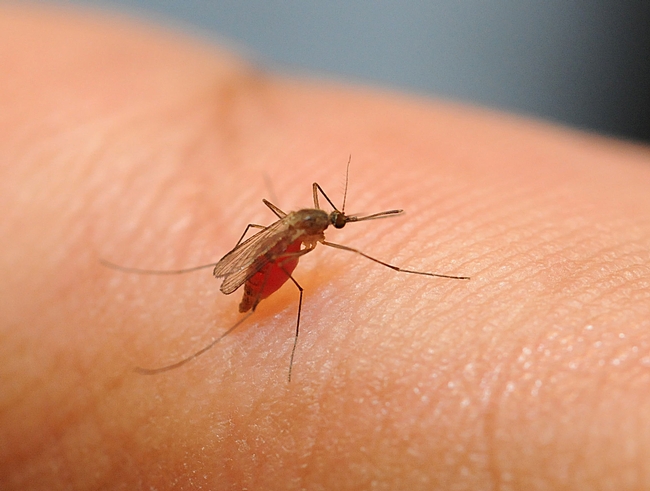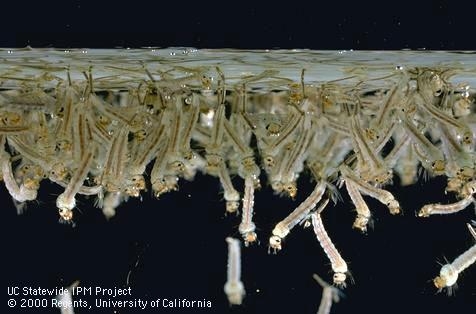Posts Tagged: Mosquitoes
Anthony Cornel Knows Mosquitoes
Medical entomologist Anthony “Anton” Cornel knows his mosquitoes--and a few snakes, too. When he was doing research in Brazil in...

Medical entomologist Anthony Cornel with a snake in Brazil.

UC Davis medical entomologists Anthony Cornel (foreground) and Gregory Lanzaro make annual trips to Mali to study malaria mosquitoes.
Mosquito management for ponds, fountains and water gardens
Mosquitoes can be managed using an integrated approach that relies mostly on prevention, using biological and chemical controls when necessary. The key strategy is to eliminate all potential breeding sites; even one ounce of standing water can support a population of larvae. What can be done, however, when an outdoor space contains a water element? Here are a few tips.
Water features in the landscape will invariably attract adult mosquitoes, but attempting to control them or prevent their egg laying is difficult. Larvae are easier to manage, since they are concentrated in known areas, don't yet bite, and can't fly away. Larvae prefer shallow water that is less than 24 inches deep, so install water features that are deeper than 2 feet. Ponds or features that provide a steep slope or have vertical walls that quickly drop off into deep water will also be less favorable to mosquitoes. Adding a fountain, waterfall, or other device increases water circulation and reduces the stagnation that allows mosquitoes to breed.
Remove excess vegetation and organic debris that provide mosquito larvae with food, shelter from the sun, and hiding places from predators.
In natural environments, bacteria, nematodes, other insects, crustaceans, and fish often keep numbers of mosquito larvae low. Conserve predators such as dragonflies and backswimmers, which may have colonized ponds, by avoiding broad-spectrum insecticides and consider introducing fish. County vector control services may provide free mosquito fish, voracious consumers of mosquito larvae and pupae. Never release mosquito fish into natural water bodies, since these fish aren't native to California and can disrupt ecosystems.
Although these measures will prevent problems in most cases, mosquito larvae may still develop in some ponds.
In gardens with lots of plants growing in still water, it may be impossible to keep mosquitoes from breeding. Regularly check water features for larvae, which periodically come to the surface to breathe through abdominal siphons Watch for the larvae's characteristic wriggling movement, or use fine dip nets to monitor for larvae. It is important to act quickly to kill mosquitoes when they are small, easiest to manage, and before they become adults and start biting.
Larvicides containing spores or metabolites of the bacterium Bacillus thuringiensis israelensis (Bti) (e.g., Mosquito Dunks, Mosquito Bits, Microbe-Lift, and other products) act as stomach poisons when ingested, killing larvae within a few days. Bti affects only fly larvae, so it won't harm predatory insects living in the pond or water feature. Another effective larvicide is the insect growth regulator (IGR) methoprene (e.g., Pre-strike Torpedos). IGRs interfere with larval molting and also take a few days to kill, but they have a broader spectrum of activity, affecting most juvenile insects and other arthropods that might be in the pond. Both Bti and methoprene are available as granules or pellets, remain effective for about a month, and as with all pesticides, should be used only according to label directions.
For more information about mosquitoes, visit http://www.ipm.ucdavis.edu/PMG/PESTNOTES/mosquitoes.html.
This article by Andrew Sutherland, UCCE advisor in the San Francisco Bay Area and UC Statewide IPM Program, was originally published in the June 2013 issue of the Retail Nursery and Garden Center IPM News. Read the entire article at http://www.ipm.ucdavis.edu/RETAIL/retail-newsletter.html
The Hostest with the Mostest
You're sitting in your back yard or at a park and a mosquito bites you. You're the host whether you like it or not. You just hope that this isn't an...

Tara Thiemann is researching bloodfeeding patterns of Culex mosquitoes. (Photo by Kathy Keatley Garvey)

Tara Thiemann working in the lab. (Photo by Kathy Keatley Garvey)
The Mosquito Man: Stepping Down
Most people have never served 38 consecutive years on an executive board that looks out for the health and welfare of two million people. But...

Culex quinquefasciatus, which can transmit West Nile virus. (Photo by Kathy Keatley Garvey)

Medical entomologist Robert Washino during his military years in the mid-1950s. This photo was taken in a lab south of Paris, France.
A World Without Mosquitoes?
A world without mosquitoes?An article in the July 21st edition of Nature asked that very question. Author Janet Fang, an intern in Nature's...

Culex mosquitoes


